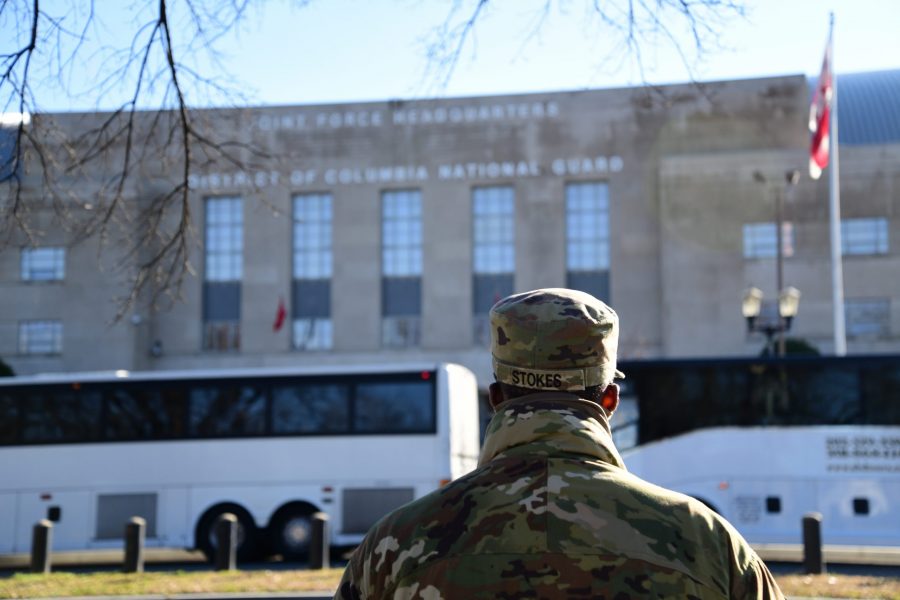As the National Guard’s presence in Washington grows in response to the Jan. 6 breach of the U.S. Capitol building by rioters, state-level Guard leaders are reluctant to discuss how their Airmen and Soldiers will be armed and the kind of force they’ll be authorized to wield while deployed to the city through Inauguration Day.
“There’s no hiding the fact that, you know, Soldiers and Airmen do have lethal force with them,” said Army Brig. Gen. Dave Wood, director of the joint staff for the Pennsylvania National Guard, during a Jan. 8 Zoom call with Guard leaders and reporters.
PANG doesn’t “advertise” its regulations pertaining to the use of force because divulging that information could endanger its troops, but the way those rules are engaged depends on “the scenario and situation,” he said.
“We’re not going to put away the equipment that we have,” Wood told reporters. “We’re going to bring it with us, and the way we deploy it will be based on the situation and based on the commander’s intent.”
He noted that PANG troops—about 1,000 of whom have been tapped to support the District of Columbia National Guard in the nation’s capital—will attempt to deescalate as much as possible, and have a behind-the-scenes, supportive tasking, with matters such as arrests and detentions being handled by law enforcement in D.C. Approximately 50 of these troops are communications Airmen from the Pennsylvania Air National Guard, he said.
“You know, these are Soldiers and Airmen,” he said. “They’re trained and, you know, you don’t send firemen into a fire without all their equipment, so having that equipment available is part of what we do, and how we use it is part of our business.”
Wood also noted that since PANG planned on sending about 1,000 troops to D.C. for Inauguration Day, the current activation just moved up their schedule.
“I would probably say across the board for all the states that were planning to come—and that includes Maryland, Delaware, [and] all of the states here in FEMA Region 3 and Region 2—I don’t think the operational tempo really changed that much,” he said.
While Maryland Adjutant General Army Maj. Gen. Timothy E. Gowen didn’t elaborate on his troops’ rules for use of force or specify the kind of equipment they’d carry with them into the district, he expressed confidence that the approximately 500 Maryland Army National Guard troops mobilized to D.C. are well-trained, sufficiently equipped, in good hands under DCNG leadership, and well-versed in their current tasking.
“My guys are pretty well experienced, unfortunately, in this mission set,” he explained, citing the Guard’s response to civil unrest in Baltimore following the death of Freddie Gray in police custody and noting that the MDNG’s current deployment is its second to D.C. in about six months.
“I’m always concerned about the safety of my Soldiers … I’ll be happier when they’re home, but I think we’ve done everything we can do to make sure that they’re in the best posture possible,” he added.
During the same call, New Jersey National Guard Interim Adjutant General Army Col. Lisa J. Hou declined to provide details on whether her state’s Guard personnel would be allowed to carry lethal weapons and the rules governing their use of force.
The 500 N.J. Guard personnel deploying to D.C. include 100 N.J. Air National Guard security forces Airmen, collectively pulled from the 108th Wing at Joint Base McGuire-Dix-Lakehurst and the 177th Fighter Wing at Atlantic City Air National Guard Base, she said.
A security forces squadron from the Virginia Air National Guard also is in D.C. providing support, NGB Director of Operations Air Force Maj. Gen. Steven S. Nordhaus noted.
